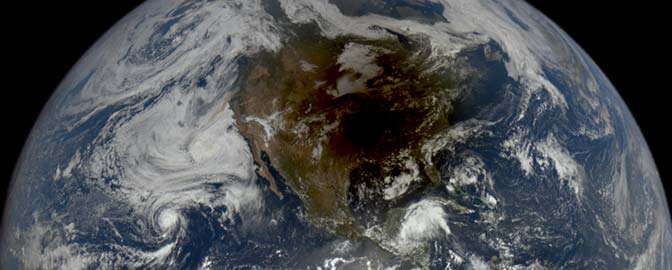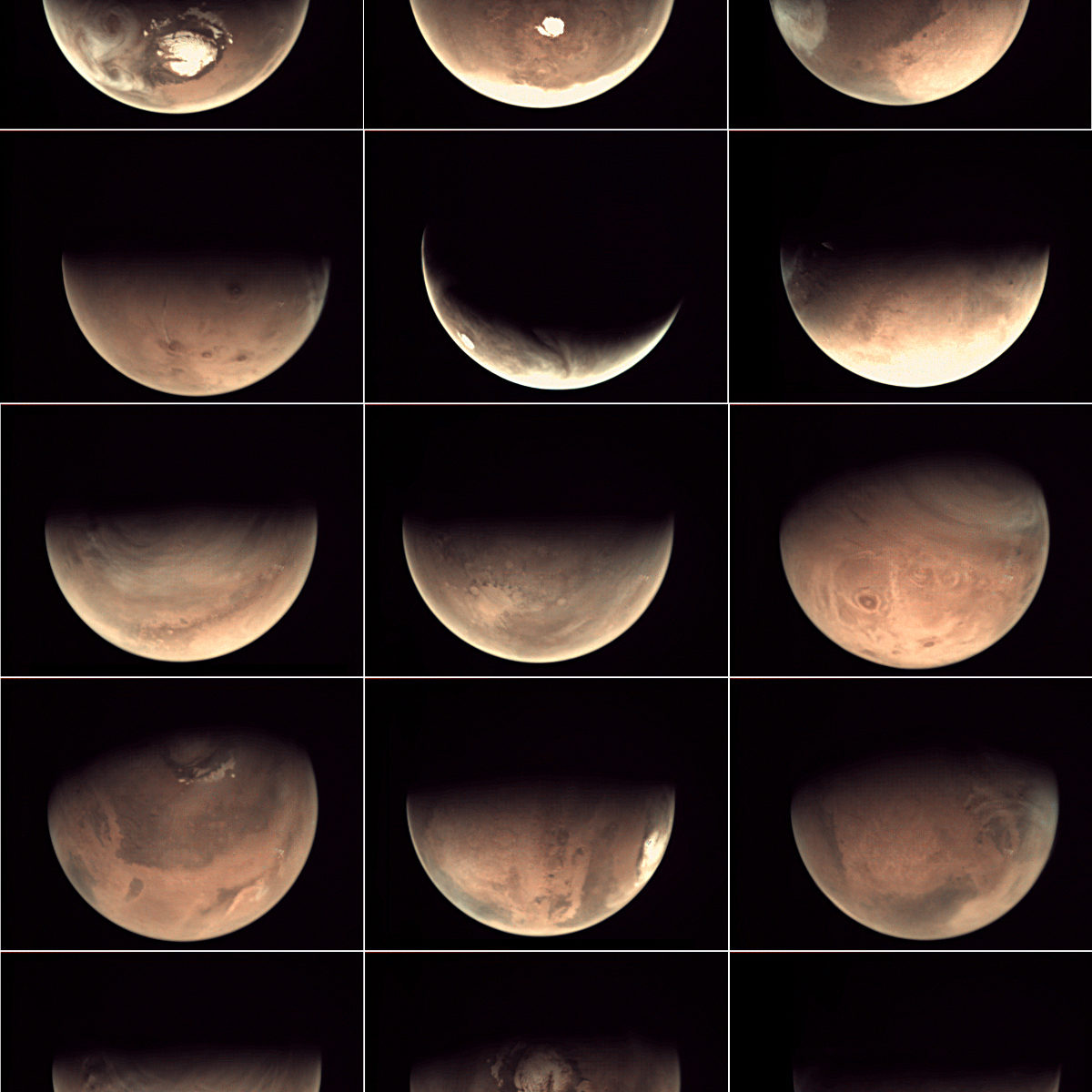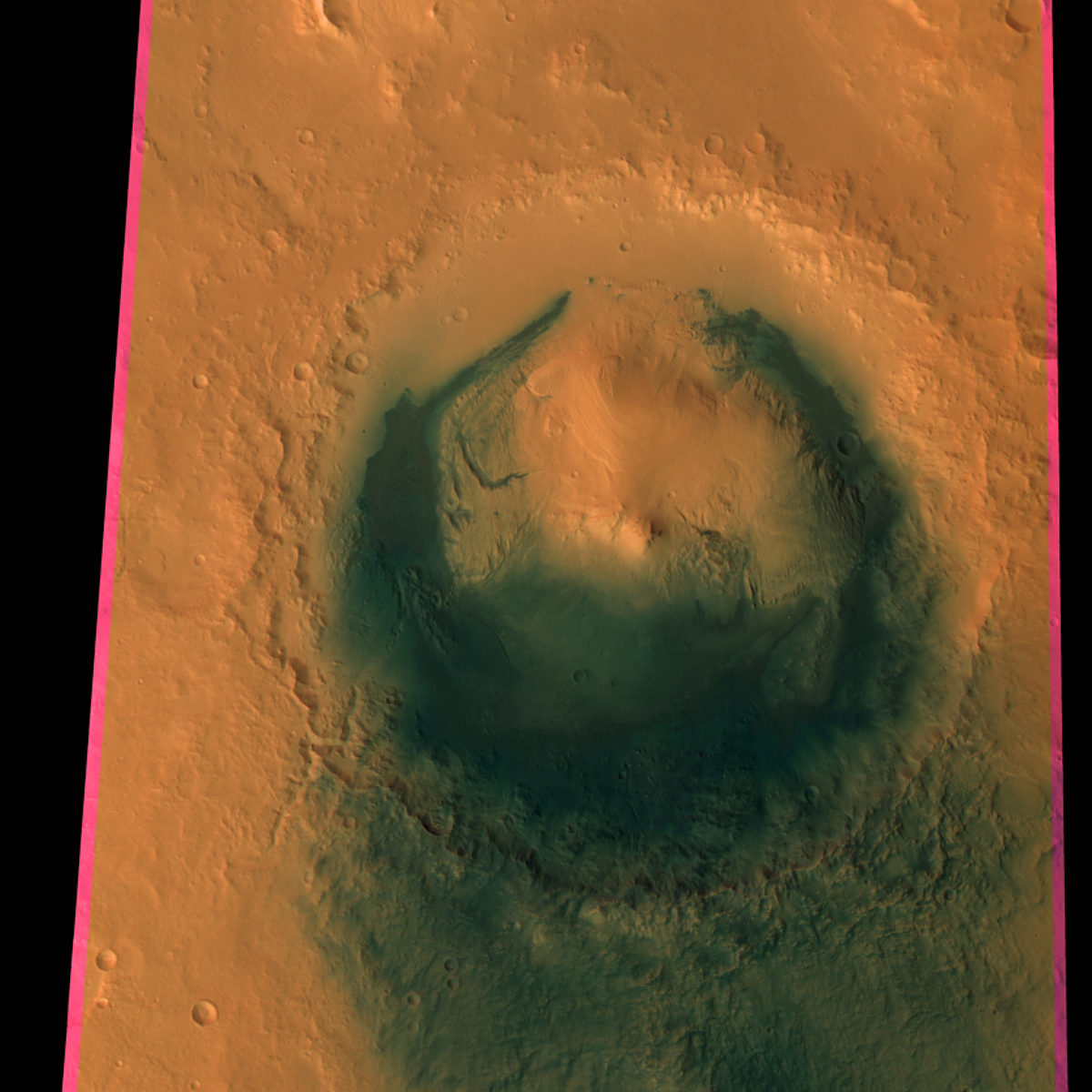All
All
Stories, updates, insights, and original analysis from The Planetary Society.
Flawed Beauties
More examples of imperfect--but tantalizing--images from deep space.
Beagle 2 found?
What happened to Beagle 2? It's been a mystery for 11 years. That mystery appears to have been solved.
Seven Mars spacecraft attempted observations of comet Siding Spring. How did they go?
It's been two weeks since comet Siding Spring passed close by Mars, and six of the seven Mars spacecraft have now checked in with quick looks at their images of the encounter. I round up all the results.
Status update: All Mars missions fine after Siding Spring flyby
All seven Mars spacecraft are doing perfectly fine after comet Siding Spring's close encounter with Mars.
Phobos over Mars
Today the Mars Orbiter Mission released a nice four-image animation of teeny dark Phobos crossing Mars' huge orange disk. Mars Orbiter Mission joins a long line of Mars missions that have produced images of Mars and Phobos together.
Mars Orbiter Mission delivers on promise of global views of Mars
Ever since I first learned about the capabilities of Mars Orbiter Mission's small payload of science instruments, I have been anticipating one type of data in particular: global color views of Mars captured in a single 2000-pixel-square frame. Just days after entering orbit, Mars Orbiter Mission has delivered on that promise.
Comet Siding Spring Mars encounter: One Mars Express plan becomes two
The Mars Express Flight Control Team at ESOC have been actively preparing for the flyby of comet C/2013 A1/Siding Spring on October 19. Initial estimates gave the possibility that Mars Express might be hit by 2 or 3 high-speed particles. Happily, additional observations by ground and space telescopes have shown the risk to be much lower – and perhaps even as low as zero. In today's blog post, the team explain how this (happy!) real-life, real-time development is affecting their preparations for fly-by.
So Close and Yet So Far: Why isn't Siding Spring going to sandblast Mars?
Comet Siding Spring is going to make a very close approach to Mars in October. Any comet dust that reaches Mars has the potential to inflict significant damage on the spacecraft orbiting the planet. As it turns out, however, Mars and its orbiters are likely to see very few, if any, impacts. Why?
Curiosity Rover Science Plan Slammed by NASA Review Panel
Senior review recommends continuing all major planetary exploration missions, but not without some changes.
New Postcards from Mars
The latest snaphots from the
Mars orbiters plan for their October encounter with comet Siding Spring
Now that we have reasonable confidence that our Mars orbiters will be safe from the close passage of comet Siding Spring, we are free to be excited about the opportunity that the encounter represents. At a community workshop on August 11, representatives from Mars missions shared their plans for great comet science.
New orbital images of Curiosity landing site from Mars Express and HiRISE
Mars Express and Mars Reconnaissance Orbiter are keeping their eyes in the sky on Curiosity. There's a nice newly public color image of all of Gale Crater from HiRISE, and two new HiRISE images within the Curiosity landing site.
Comet Siding Spring Mars encounter: Cosmic bully spotted by ESA and NASA
Hubble has taken some great new images of our 'friend,' Comet Siding Spring, due to pass by Mars at less than 136,000 km on October 19 – less than half the distance between Earth and our moon.
Comet Siding Spring Mars encounter: Ya gotta have a little ‘tude
In the latest update on how the Mars Express flight control team is planning to deal with Comet Siding Spring is all about attitude -- and hiding behind the biggest guy in the fight.
Comet Siding Spring Mars encounter: How to determine the orbit of a comet?
In the quest to track Comet Siding Spring, the Mars Express team tells us how computing the orbit of a comet isn't as straightforward as science fiction would have us believe.
Hypervelocity Cratering and Riding Out the Risk
Today's update from the Mars Express team contains the realisation that, for some of the risks associated with October's Siding Spring flyby, there may not be much the team can do.
Space is really, really big – except sometimes it isn’t
Here's the next installment in the continuing story of how the Mars Express team is preparing for Comet Siding Spring flyby, 19 October 2014. This week: introducing the spacecraft's subsystems and structure – and wondering how we can absorb impacts.
Comet Siding Spring Mars encounter: Why orienting Mars Express is the heart of the challenge
Today's post continues where we started last week with an update from the Mars Express Flight Control Team at ESOC on their preparations for the 19 October Comet Siding Springs flyby. Today: defining the challenge!
Mars Express team readies for Siding Spring
On Sunday, 19 October 2014, at around 18:30 UTC, comet C/2013 A1 – known widely as 'Siding Spring' after the Australian observatory where it was discovered in January 2013 – will make a close fly-by of Mars.
New Hills, Old Secrets
Exploring a set of newly named hills on Mars reveals tantalizing clues to the planet's story.


 Explore Worlds
Explore Worlds Find Life
Find Life Defend Earth
Defend Earth


 Sun
Sun Mercury
Mercury Venus
Venus Earth
Earth Mars
Mars Jupiter
Jupiter Saturn
Saturn Uranus
Uranus Neptune
Neptune Small Bodies
Small Bodies
















